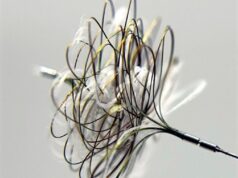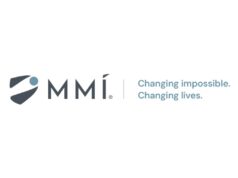
Contrary to the results of a seminal study in the field, a recent analysis presented at the Society of NeuroInterventional Surgery (SNIS) annual meeting (31 July–4 August, San Diego, USA) indicates that surgical approaches—including embolisation, microsurgery and radiosurgery—for treating selected patients with unruptured arteriovenous malformations (AVMs) are safe and effective.
Despite the potential health problems associated with unruptured AVMs, surgical interventions to treat these blood-vessel entanglements have generally been considered controversial because of the risk of complications—including stroke and death—that they also carry.
In 2014, a long-term study evaluating unruptured AVM patients across nine countries—the randomised ARUBA trial—suggested that it is safer to avoid surgery for people with these types of AVMs and, alternatively, management should be focused on treating AVM symptoms like headaches and seizures.
However, new research notes that the limitations of the ARUBA study and, thus, its results make it less generalisable for determining the guideline for treating individuals with unruptured AVMs. The same research also indicates that neurointerventionists and neurosurgeons can surgically treat unruptured AVMs successfully in carefully selected patients.
A new, collaborative study, comparing real-world data on ARUBA-eligible patients from the NeuroVascular Quality Initiative-Quality Outcomes Database (NVQI-QOD) AVM registry to findings from the ARUBA trial itself, was presented for the first time this week by primary author Anas Alrohimi (Cleveland Clinic, Cleveland, USA). Led by Alrohimi and a team from the Cleveland Clinic, the study reviewed patient information from hospitals and surgical centres around the USA using the NVQI database, on which the SNIS collaborates.
“We performed a retrospective analysis of prospectively collected data of ARUBA-eligible patients, who underwent intervention at 18 participating centres,” said Nina Moore (Cleveland Clinic, Cleveland, USA), senior author of the study. “Our results suggest that intervention for unruptured brain AVMs at comprehensive stroke centres [CSCs] across the USA is safe and effective.”
The study authors specifically analysed the records for 173 ARUBA-eligible patients with similar demographics and AVM characteristics, finding that more patients survived and did well clinically after AVM surgery, as compared to those in the ARUBA study.
For example, only 8.7% of surgically treated patients from this study experienced death or stroke, compared to 30.7% in ARUBA. In addition, only 25.4% of patients from the database experienced post-surgery physical impairment, compared to 46.2% in the ARUBA trial. Also, the study authors did not find a difference in the risk of stroke and/or death among the different surgical modalities used. As a result, they suggest that CSCs across the USA would be able to surgically treat unruptured AVMs safely.
“Seeing through these data that neurointerventionists and neurosurgeons can safely treat unruptured brain AVMs via different surgical modalities is very encouraging,” said Alrohimi. “In this constantly evolving field, it is crucial we continue to investigate new procedures that impact the patients’ outcomes. It is exciting to open up opportunities to manage this potentially deadly condition and improve patients’ quality of life.”










